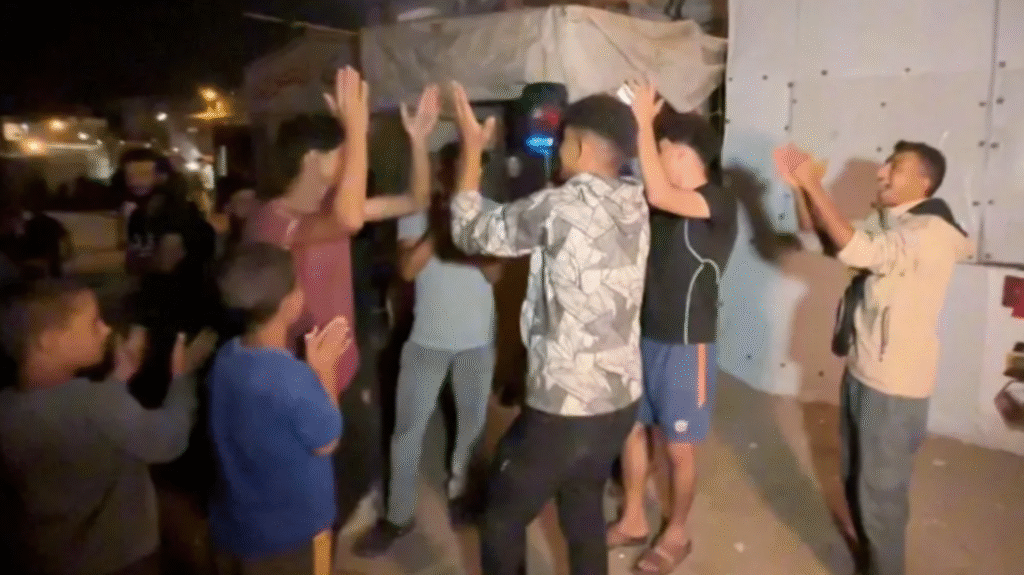Israel Hamas Peace Deal: A Landmark Beginning
The long-awaited Israel Hamas peace deal has taken its first step forward, marking what many hope will be a turning point in one of the world’s most devastating conflicts. After years of war, destruction, and loss of life, negotiators have reached an agreement that could pave the way for a permanent ceasefire and the beginning of recovery for both Israelis and Palestinians.
The first phase of the plan includes the release of hostages, withdrawal of Israeli troops from parts of Gaza, and the delivery of desperately needed humanitarian aid. While the deal has sparked joy across both communities, experts caution that the most difficult decisions still lie ahead.

Key Terms of the Israel Hamas Peace Deal
According to reports confirmed by the BBC and other outlets, the initial agreement outlines several major steps:
-
Hamas will release 20 living hostages still held in Gaza.
-
Israel will free nearly 2,000 Palestinian detainees.
-
Israeli troops will withdraw to a designated security line inside Gaza.
-
Aid deliveries will increase significantly, starting with 400 trucks per day.
US President Donald Trump, who unveiled a broader 20-point peace plan last month, said the agreement represents a “historic achievement” and called it a “great day for peace.”
Netanyahu and Trump Call It “A Great Day”
Israeli Prime Minister Benjamin Netanyahu praised the announcement, calling it “a great day for Israel.” His cabinet is expected to vote on the agreement, with a ceasefire set to begin immediately if approved.
Netanyahu and Trump also held a phone call described as “moving,” where both leaders congratulated each other on the breakthrough. Trump later told Fox News that the deal would usher in “a different world.”
At the same time, Hamas officials confirmed the plan includes troop withdrawal and humanitarian aid entry, while calling on Trump to ensure Israel complies fully.
Humanitarian Aid: A Lifeline for Gaza
One of the most celebrated parts of the Israel Hamas peace deal is the promise of increased humanitarian relief. For the first five days, 400 trucks of aid will enter Gaza daily, with numbers expected to rise later.
This comes after reports of famine conditions in Gaza, where the UN-backed Integrated Food Security Phase Classification (IPC) confirmed widespread malnutrition. According to Gaza’s health ministry, over 460 people have already died from hunger-related causes, including children.
For Palestinians, this agreement offers hope not just of peace, but of survival.
Prisoner Releases and Hostage Return
A key part of the deal involves a hostage-prisoner exchange. Hamas is set to release 20 hostages still alive in Gaza within 72 hours of Israeli troop withdrawal.
On the other side, Israel will release nearly 2,000 Palestinian prisoners, including some high-profile figures. Reports suggest the list may include Marwan Barghouti, a figure seen by many Palestinians as a potential future president.
Families of both Israeli hostages and Palestinian prisoners erupted in celebration at the announcement, but many remain cautious, noting that promises on paper still need to become reality.
Gaza and Israel React with Mixed Emotions
Across Gaza and Israel, the news of the Israel Hamas peace deal was met with fireworks, tears, and cautious hope.
In Tel Aviv’s Hostage Square, families of hostages celebrated with cheers and fireworks. “I want to see him, feel him, touch him. Only then will I know it’s real,” said Avishai David, father of an Israeli hostage.
In Gaza, celebrations filled the streets of Khan Younis. Yet, amid the joy, residents reminded the world of their ongoing suffering. Mousa, a doctor in Deir al-Balah, told the BBC: “We have lost so much during these two years of war. Gaza is destroyed. A difficult time still awaits us, but the important thing is we hope to be safe.”
International Reactions: “A Momentous Opportunity”
World leaders welcomed the agreement, with UN Secretary General António Guterres calling it a “momentous opportunity.” He pledged full UN support for implementing the deal and scaling up humanitarian aid deliveries.
Israeli President Isaac Herzog said the entire nation stood united with the families of hostages. Meanwhile, Trump and former UK Prime Minister Tony Blair are expected to oversee the proposed transitional government for Gaza once future phases of the plan move forward.
Still, concerns remain over unresolved issues like Hamas disarmament and long-term governance of Gaza.
Obstacles and Unanswered Questions
Despite celebrations, the deal leaves crucial questions unanswered:
-
Who will govern Gaza once Israeli troops withdraw?
-
Will Hamas disarm as future stages of the plan require?
-
Can both sides maintain trust after previous ceasefires collapsed?
The White House plan proposes a temporary international administration for Gaza, with eventual governance by the Palestinian Authority. However, Hamas has been excluded from any political role, raising doubts about how sustainable such an arrangement might be.
The Heavy Cost of War
The conflict that sparked this latest push for peace began on October 7, 2023, when Hamas launched a deadly attack, killing 1,200 Israelis and taking 251 hostages.
Israel’s response has been devastating:
-
67,183 Palestinians killed, including more than 20,000 children, according to Gaza’s health ministry.
-
90% of housing in Gaza destroyed or damaged, per UN estimates.
-
Ongoing accusations of war crimes and even genocide, claims Israel strongly denies.
This staggering toll underscores why the Israel Hamas peace deal is seen by many as a critical, if fragile, lifeline.

A Step Forward, but Far From the End
While the agreement is only the first phase of a larger peace plan, its importance cannot be overstated. For families waiting for loved ones to return, for children waiting for food, and for civilians yearning for peace, this deal represents a ray of hope.
But as history shows, the road to peace in the Middle East is long, complex, and fraught with challenges. Whether this moment becomes a lasting turning point depends on the commitment of both sides, and the world watching closely.

